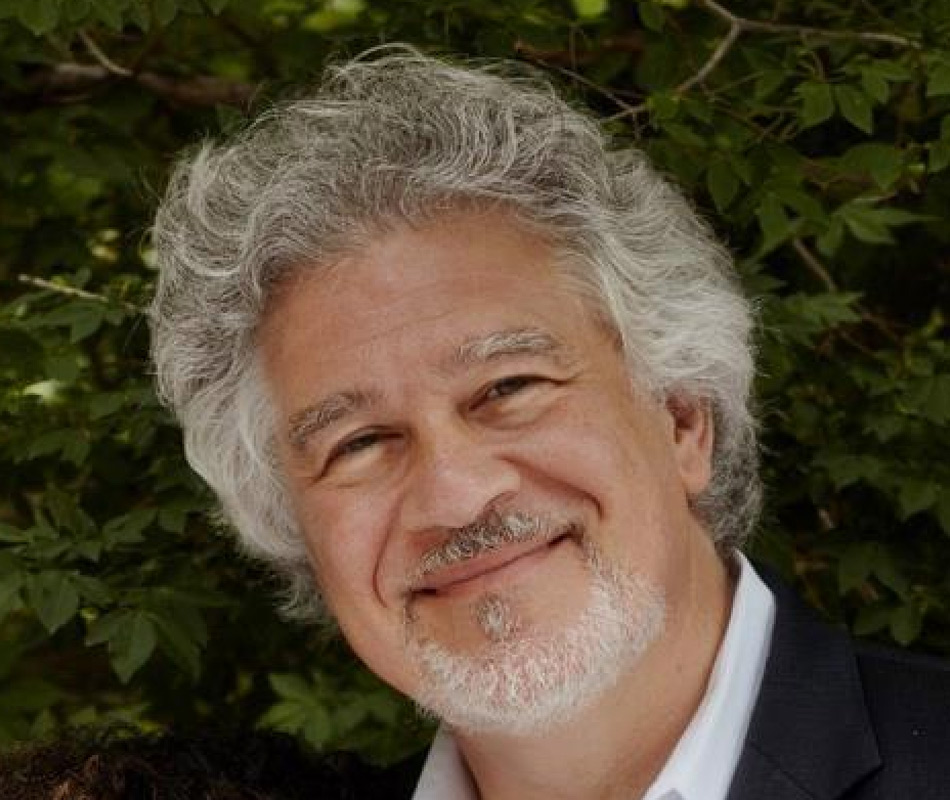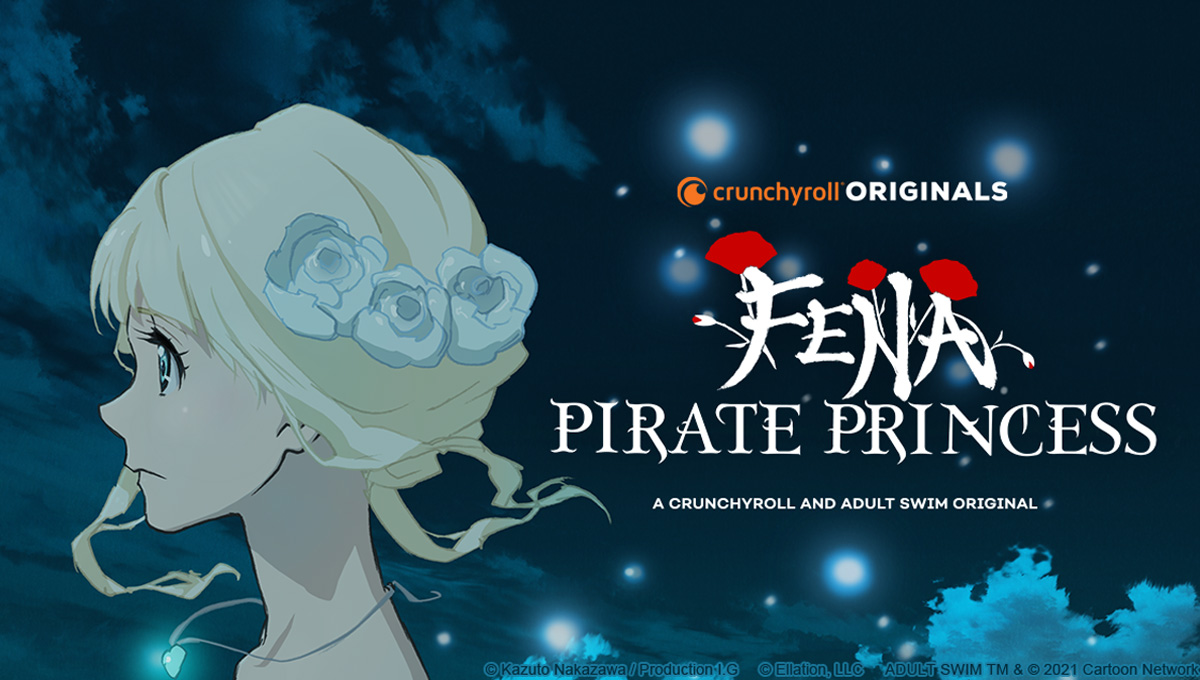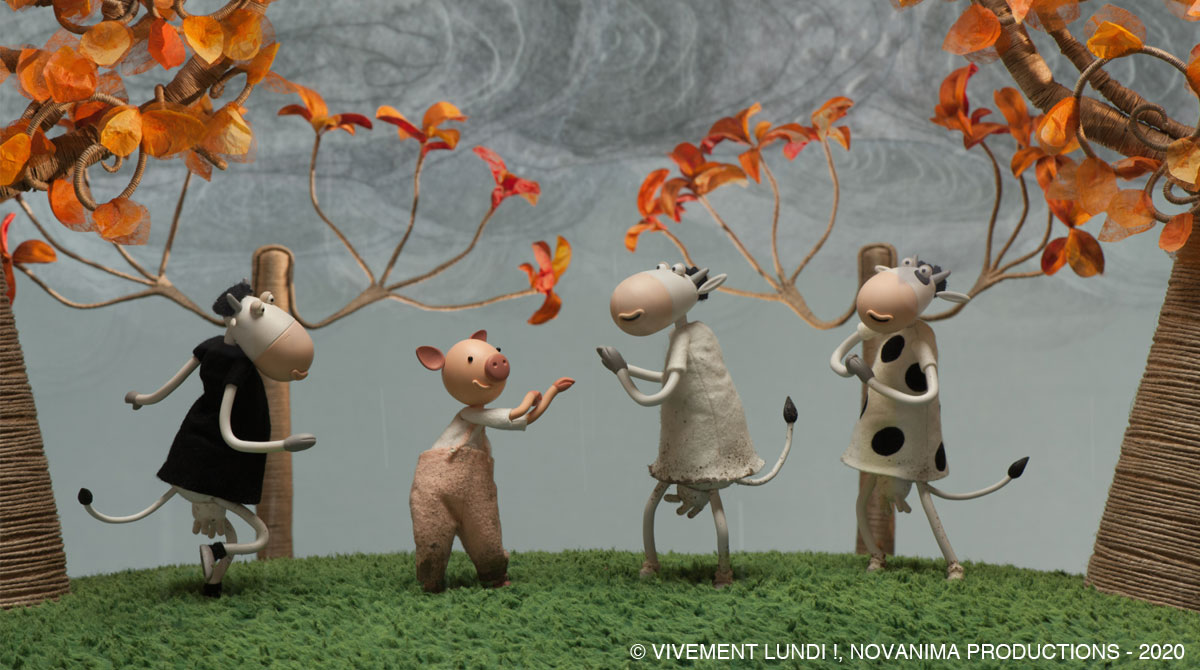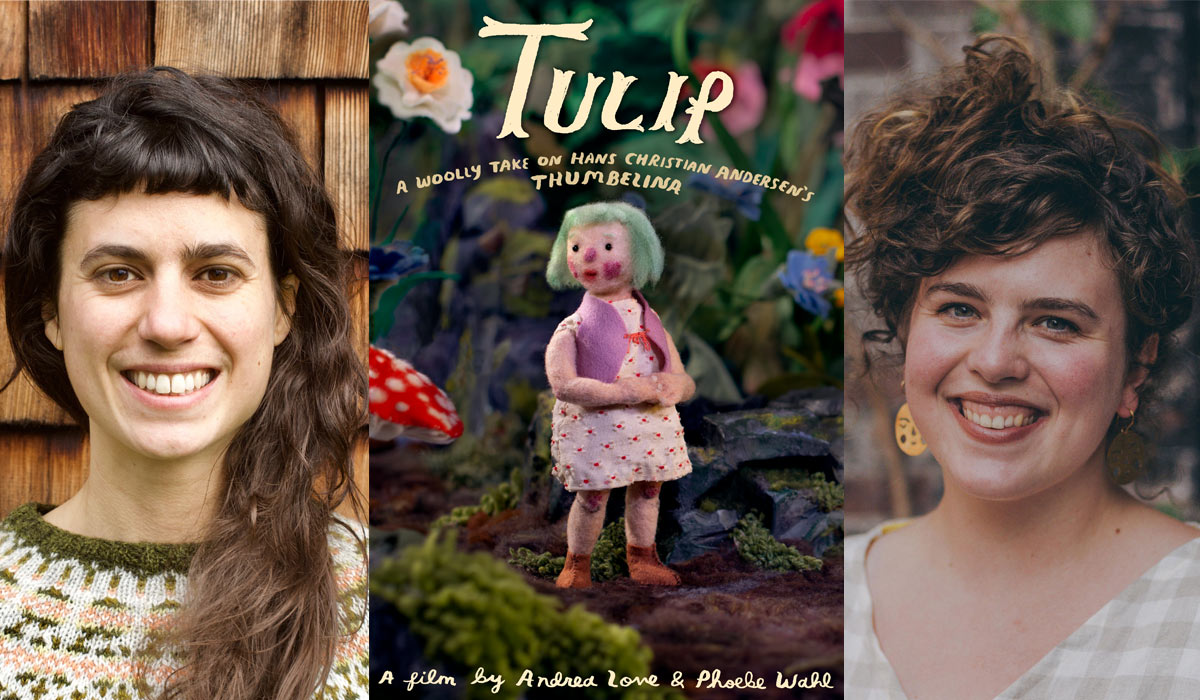Lamya’s Poem
Synopsis
LAMYA’S POEM is an inspiring and timely tale about a 12-year-old Syrian refugee girl named Lamya. When she flees the violence of her country, she is given a book of poetry written by the famous 13th-century poet, Rumi. As the perils of her journey mount, the book becomes a magical gateway where she meets Rumi as a boy, at a period when he too was a refugee fleeing the violence of his time. In their shared dreamworld, they battle the monsters that follow them from the real world . Lamya must help young Rumi find his calling and write the poetry which, 800 years later, will save her life.
Film Credits
Director: Alex Kronemer
Author: Alex Kronemer
Producers: Sam Kadi, Glenn James Brown, Alex Kronemer
Artistic director: Kristina Vardazaryan
Music: Christopher Willis
Target Audience: All audiences
Technique: 2D digital/ 3D digital
Running time: 01 h 29 min
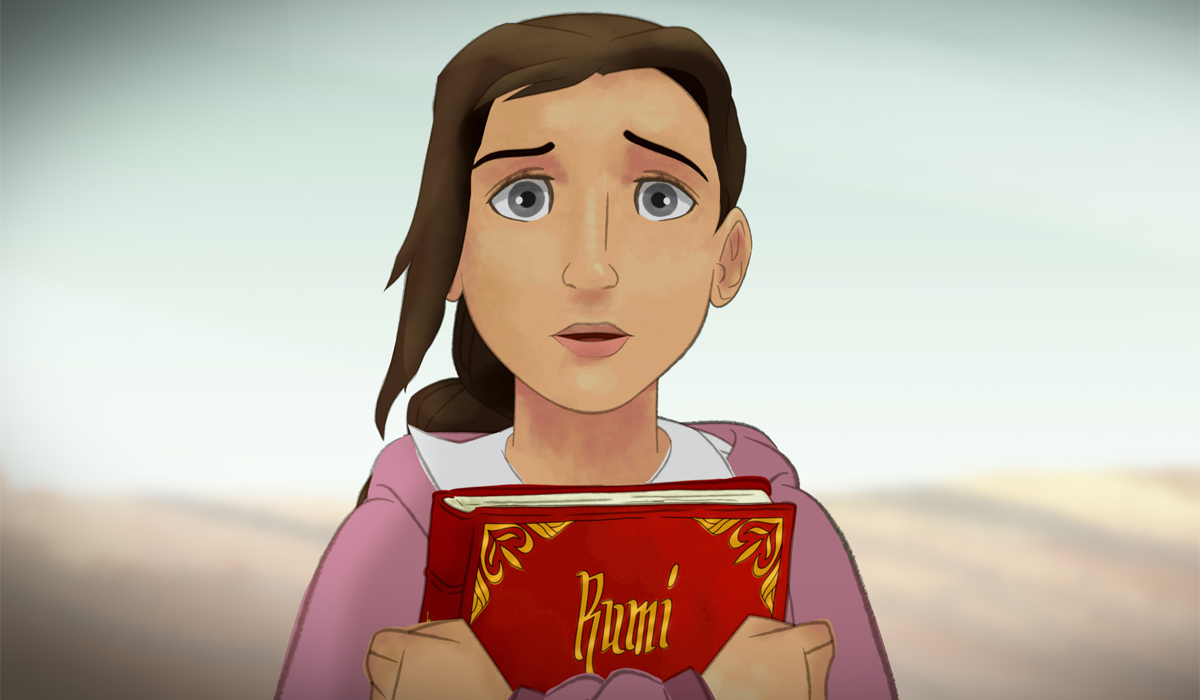
Lamya’s Poem is the story of two refugee children – Lamya, a Syrian girl living in today’s world and Rumi, the famous Persian poet living in the 13th century. Both struggle with their harsh realities and find hope when they meet in Lamya’s dream, where they help each other in the fantasy world. The film is nominated for “Feature films in competition – Official” at the Annecy International Animation Film Festival 2021 where it will have its world premiere.
The film tackles a very complex topic for humankind – how to find a peaceful remedy to the cycle of hatred. It does so in this story where an innocent girl and boy find themselves confronting harsh situations. We watch them as they gain courage and learn tolerance. The team does a great job of telling a difficult story. It succeeds in delivering a universal message against war. We heard from Alex Kronemer, the director, author and producer, who told us more about his film.
Interview with Alex Kronemer
Hideki Nagaishi (HN): Which aspects of the story did you most want to depict in the film? And which audience would you most like to reach with it?
Alex Kronemer: “The wound is the place where the light enters you.” This is one of Rumi’s most quoted lines and is the main theme of the film. We all experience hardships and loss in our lives, even if not as extraordinary as the losses experienced by Lamya and her real-life counterparts. In those moments we are often pulled toward bitterness, anger, and debilitating self-pity. But as Rumi says, those same experience can also open us to greater compassion, patience, and mercy toward others. “The world keeps breaking your heart until it opens,” says Rumi in another famous poem, which we include in the film along with some of Rumi’s other poetry. Suffering can seem meaningless. But it can also create rewarding connections to others and bring us to a deeper understanding of ourselves.
The film also explores the mystical connection between artists and their audience. It’s not a one-way street: the artist gives, and the audience receives. The audience also gives. Their need for the artist’s work is what compels an artist to create. And as in the case of an artist like Rumi, whose audience has numbered in the many millions over the centuries, people he could never know and hardly imagine, the two-way connection across time and space has an element of wonder about it that itself elevates us above the human condition.
But the film is not all about philosophical themes. It also is meant to shed light on the struggles the Syrian people have endured for these last many years. It remains the greatest humanitarian crisis of this young century, yet it has nearly vanished from public attention and concern. For the millions of refugees seeking help and safety, we hope the film will remind people of their plight, and their need for some of the compassion that our own wounds can open us to.
Though targeted to a mature audience and dealing with the subjects of war, fear, and loss, the film does not depict any graphic violence. The relationships in the film are all warm, so younger audiences and families will also enjoy the film.
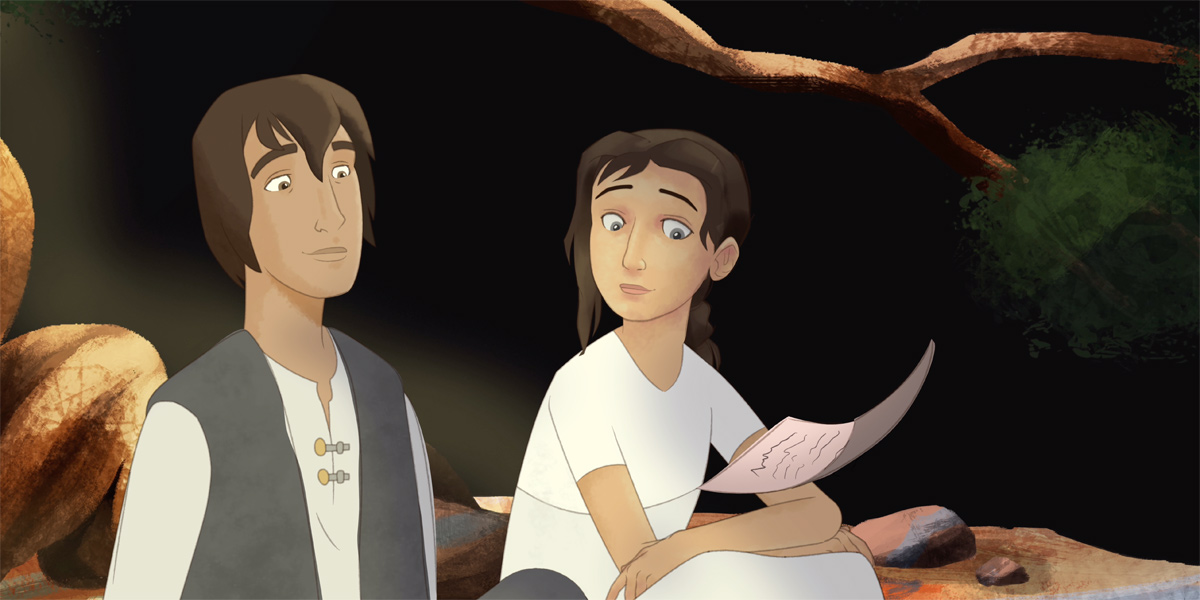
HN: How did the film project begin and how did you build the team?
Alex Kronemer: Lamya’s Poem is an international production that includes a wide diversity of people who variously have intimate connections to the story, beginning with our own company, Unity Productions Foundation (UPF). UPF has been working in film and television for over 20 years producing films and docudramas about the people, history and cultures of the Muslim world, including the Emmy nominated film, The Sultan and the Saint, and consulting on many television programs aimed at breaking harmful stereotypes of, and promoting a better understanding about, Muslims, Arabs, and South Asians. Our work takes us around the world, and we started Lamya’s Poem by first talking to Syrian Refugees that we met in Turkey, Egypt, Canada, and the US.
Many of those conversations were with young people, who helped us understand and develop the character of Lamya. In fact, “Lamya” was the name of the first young Syrian we talked to. Next, we engaged refugee advocates and sponsors working in the US, Canada, and in refugee centers in Jordan for further insights and context. We also talked to numerous scholars on Rumi and translators of his poetry in order to better understand his story. While our film presents a purely fictionalized vision of his youth, it is firmly rooted in the known facts about that period of his life.
With all this research in place, the script was written and we began searching for an animation partner.
We considered many accomplished animation teams from around the world, and ultimately settled on PIP Animation Studios in Ontario, Canada. We liked the work they did on an earlier animation project called Pirate’s Passage. But most of all, they seemed to really understand the story we wanted to tell and also had people in key positions from places and backgrounds that gave them a special access to the story. Our amazing Director of Animation, Brandon Lloyd worked tirelessly on shepherding the story along through lockdown, when the studio had to close, and the production was forced to continue in various remote workplaces. Glenn Brown, the producer at PIP, also performed in a herculean way to keep the film on track, and to ensure that, despite all the obstacles and challenges that came with the pandemic, we still completed the film on schedule.
Sam Kadi, a film maker from Syria who now lives in the US, came on at the same time as Producer. Sam is an award-winning director, writer and producer of several critically acclaimed dramas, including The Citizen. He also produced and directed Little Gandhi, a war zone documentary about the Syrian conflict that was an official entry for Best Foreign Language Film for the 2017 Oscars. Sam has also been recognized by the Cinema for Peace organization for raising awareness of human rights issues through motion pictures. Sam’s insights not only as an amazing filmmaker, but also as a Syrian who grew up on streets similar to those we depict in Lamya’s Poem, were a huge contribution.
Mena Massoud (Aladdin) was our first choice to voice the character of young Rumi. We were lucky to get the very talented Millie Davis (Wonder) for Lamya. And the experienced actor Faran Tahir (Iron Man, Star Trek) brought his natural gravitas to the character of Rumi’s Father.
Finally, we worked with Christopher Willis to create the score, which is described in detail below, and the rich soundscape of the film was created by the aptly named Baltimore-based company called The Sound Department.
We are now excited by be joined by WestEnd Films as our international sales representative, and ICM Partners in North America.
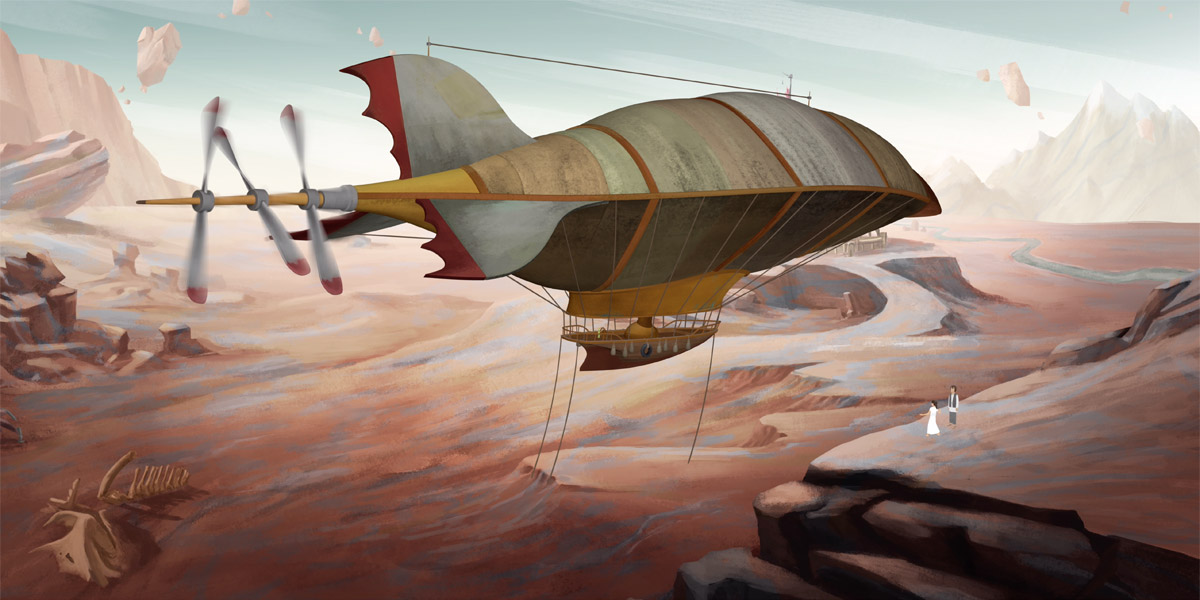
HN: Where did the initial idea for the project come from and what did you most focus on while developing the story?
Alex Kronemer: Several years ago, during one of the worst periods of fighting in Syria when over 12 million Syrians lost their homes and half became refugees, a story came to our attention about a group of Syrian refugees in a park in Athens who were reading Rumi’s poetry to each other. This caught our attention. Rumi’s poetry is often associated with themes of love, which seem very remote from the experiences of these refugees. But upon deeper examination, we learned that it wasn’t as strange as it might appear at first glance.
Rumi’s poetry is rooted in parts of his life story that are much deeper—and earlier—than is often understood. As a boy, Rumi was himself what we could call a refugee, as his family was forced to flee the Mongol Invasion that swept across Central Asia and over much of the Arab Middle East. During this period, he is known to have been haunted by frightening dreams of people calling for his help, which his father interpreted for him as people in times and places he could hardly imagine needing his words. Literature is a way of overcoming trauma. Those Syrian refugees in that Athens park needed Rumi. And through the connections he had to such people, he needed them to have a reason to write. Out of this idea was born the story of young Rumi and a 12-year-old Syrian girl living 800 years later who are connected across time and space through poetry that saves them both.
Lamya is a composite of stories of real-life Syrian refugees who we interviewed in developing her character. Her struggle to endure, grow, and learn in the face of civil war, chaos, and flight is also their story.

HN: How did you approach the visual development, both of the characters and of the story of the universe?
Alex Kronemer: In designing Lamya’s Poem, we set out with the goal of creating a film that would have a refined, artistic look appropriate to the topic. We drew inspiration and techniques from several sources, including graphic novels and classical paintings, to create our visual palette. Our intent was to complement the mature nature of some of the themes of the film with the grit and texture afforded by visible brush strokes, roughened textures, and imperfect color fills.
In this classic tale of good versus evil, we used green and red as beacons of guidance for the audience in the film. Through these uses of color, as well as many symbolic visual metaphors, we were able to support the storytelling. For example, in the beginning as Lamya dreams of chasing fireflies in a beautiful garden, we opted for a subtle but peaceful green as the dominant hue in the night sky. The use of green is extended to the fireflies, which throughout the film, symbolize hope. Green is also the color of Lamya’s teacher’s sweater, whose guidance nurtures the start of her journey. In contrast, red hints at the corruption of anger and hatred which stain the dream world and even flicker within Lamya as she struggles. We see it in her eyes, which are a window in into the hope and despair she feels as a refugee.
While doing justice to the tragic reality of such a life, Lamya’s Poem alsoevokes a sense of rich culture through classical painting techniques, bold silhouettes and large vistas. The use of a wide visual format for the film helped to further the sense of scale and adventure.
HN: Could you tell us about the story behind the music for the film?
Alex Kronemer: A rich score by award-winning British composer Christopher Willis matches the film’s visual palette with soaring orchestration that makes use of the traditional Middle Eastern reed flute called the “ney.”
Willis took inspiration from a “ney”, an important recurring theme in the poetry of Rumi, and likewise a central part of the film. When Lamya first meets Rumi in her dreams, he’s playing a reed flute. She literally follows the sound to find him. The flute connects the two characters, singing to them at many key moments, bridging the distance between them. It represents the powerful way that Rumi’s poetry calls out to Lamya across space and time.
To bring this to life, Willis collaborated with Hossein Omoumi, one of the world’s foremost performers on the Persian “ney”. Around this central element, the music is scored for chamber strings, with harp, soprano, and electronics. The strings represent Lamya’s point of view, while the harp draws us into her dream landscape. And the lurking, threatening dark forces in the movie are represented by the electronic sound design. In constructing the sound design textures of the movie, Willis drew on audio recordings of the sounds of modern war, including bombs, tanks and breaking glass.




